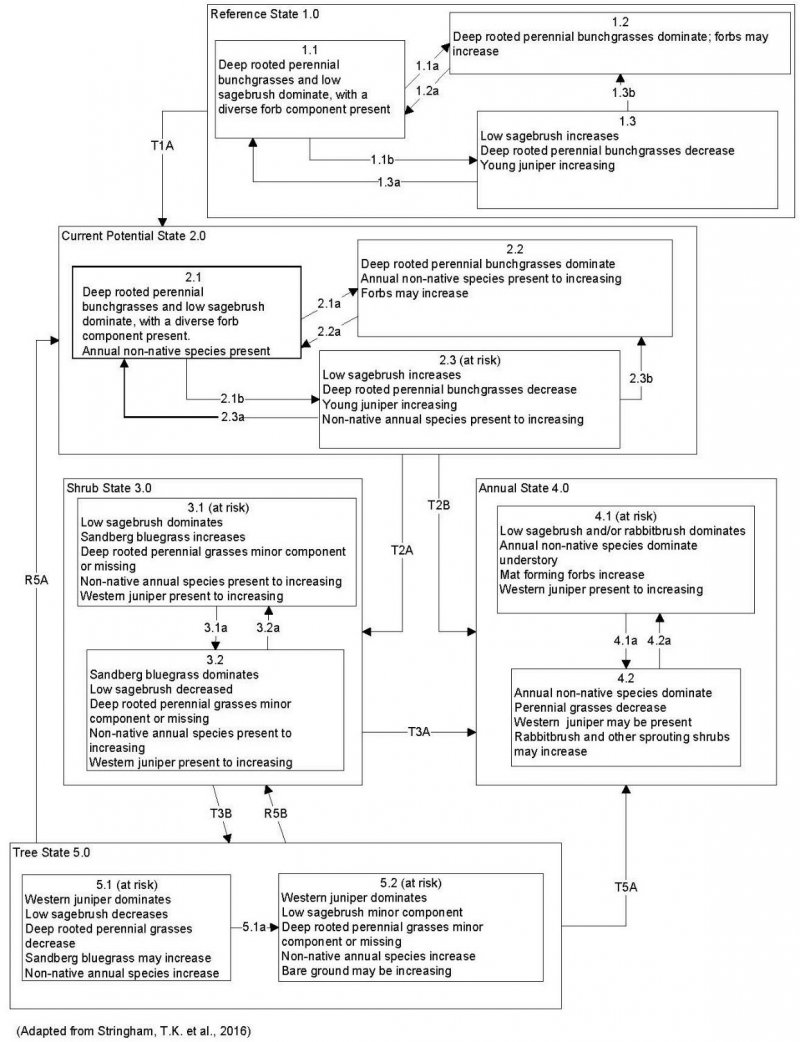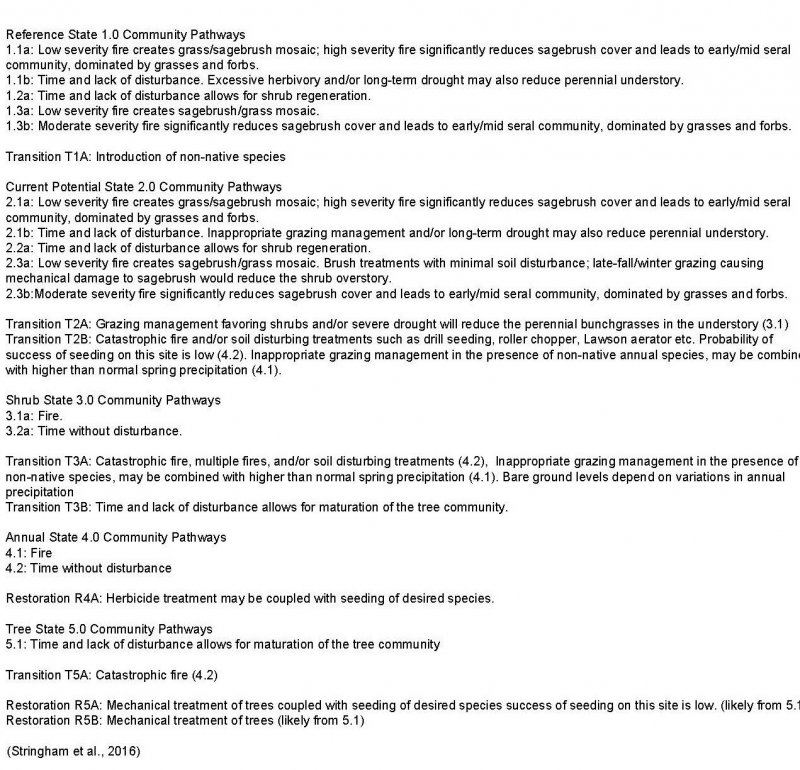
Natural Resources
Conservation Service
Ecological site R043CY808OR
Claypan (ARAR8/FEID-PSSPS)
Last updated: 3/31/2025
Accessed: 12/21/2025
General information
Provisional. A provisional ecological site description has undergone quality control and quality assurance review. It contains a working state and transition model and enough information to identify the ecological site.
MLRA notes
Major Land Resource Area (MLRA): 043C–Blue and Seven Devils Mountains
This MLRA covers the Blue and Seven Devils Mountains of Oregon, Washington and Idaho. The area is characterized by thrust and block-faulted mountains and deep canyons composed of sedimentary, metasedimentary, and volcanic rocks. Elevations range from 1,300 to 9,800 feet (395 to 2,990 meters). The climate is characterized by cold, wet winters and cool, dry summers. Annual precipitation, mostly in the form of snow, averages 12 to 43 inches (305 to 1,090 millimeters) yet ranges as high as 82 inches (2,085 millimeters) at upper elevations. Soil temperature regimes are predominately Frigid to Cryic and soil moisture regimes are predominately Xeric to Udic. Mollisols and Andisols are the dominant soil orders. Ecologically, forests dominate but shrub and grass communities may occur on south aspects and lower elevations as well as in alpine meadow environments. Forest composition follows moisture, temperature and elevational gradients and typically ranges from ponderosa pine and Douglas-fir plant associations at lower elevations, grand fir at middle elevations and subalpine fir and Engelman spruce at upper elevations. Historical fire regimes associated with these forest types range from frequent surface fires in ponderosa pine - Douglas Fir forest types to mixed and stand replacing fire regimes in grand fir and subalpine fir types. A large percentage of the MLRA is federally owned and managed by the U.S. Forest Service for multiple uses.
Classification relationships
Plant Assoc. of Blue and Ochoco Mountains (R6 E TP-036-92)
Western juniper/low sagebrush - CJS1
Low sagebrush/Idaho fescue-bluebunch wheatgrass - SD1911
Low sagebrush/Sandberg bluegrass - SD9221
USDA Forest Service Ecological Sub-region
M332 “Blue Mountains”
U.S. National Vegetation Classification Standard (NVCS)
Group:G308. Intermountain Low & Black Sagebrush Steppe & Shrubland
Alliance:A3219. Artemisia arbuscula ssp. arbuscula Steppe & Shrubland Alliance
Association(s):
Artemisia arbuscula ssp. arbuscula / Festuca idahoensis Shrub Grassland
Artemisia arbuscula ssp. arbuscula / Pseudoroegneria spicata Shrub Grassland
Ecological site concept
This site occurs predominantly on hills, mountain plateaus and ridges with soils that have a root restrictive layer at less than 20 inches (e.g. abrupt textural change or bedrock). Most commonly an abrupt textural change from loamy to clayey textures occurs in the upper 7 inches. In the reference state, the site is characterized by low sagebrush (Artemisia arbuscula), Idaho fescue (Festuca idahoensis), and bluebunch wheatgrass (Pseudoroegneria spicata). Historically, plant community dynamics were driven primarily by disturbances such as localized fire and drought. This site is susceptible to western juniper (Juniperus occidentalis) encroachment and/or annual grass invasion with disturbance outside the normal range of variability. Susceptibility to western juniper invasion is greater in the southern portion of the MRLA.
This is a provisional ecological site that groups characteristics at a broad scale with little to no field verification and is subject to extensive review and revision before final approval. All data herein was developed using existing information and literature and should be considered provisional and contingent upon field validation prior to use in conservation planning.
Associated sites
| R043CY804OR |
Cool Mountain Bunchgrass (ARTRV/FEID) Adjacent soils lacking well developed claypan layers |
|---|
Similar sites
| R043CY807OR |
Scabland (PSSPS-POSE-DAUN) Soils lack an abrupt textural change to a claypan within the upper horizon |
|---|
Table 1. Dominant plant species
| Tree |
Not specified |
|---|---|
| Shrub |
(1) Artemisia arbuscula |
| Herbaceous |
(1) Festuca idahoensis |
Click on box and path labels to scroll to the respective text.
States 2 and 5 (additional transitions)
| T1A | - | Introduction of non-native species |
|---|---|---|
| T2A | - | Grazing management favoring shrubs and/or severe drought will reduce the perennial bunchgrasses in the understory |
| T2B | - | Catastrophic fire, and/or soil disturbing treatments/activities. Inappropriate grazing management in the presence of non-native annual species, may be combined with higher than normal spring precipitation |
| T3A | - | Catastrophic fire, and/or soil disturbing treatments/activities. Inappropriate grazing management in the presence of non-native annual species, may be combined with higher than normal spring precipitation |
| T3B | - | Time and lack of disturbance allows for maturation of the tree community |
| R5A | - | Mechanical treatment of trees coupled with seeding of desired species |
| R5B | - | Mechanical treatment of trees |
| T5A | - | Catastrophic fire |
State 1 submodel, plant communities
| 1.1A | - | Low to high severity fire |
|---|---|---|
| 1.1B | - | Time and lack of disturbance. Excessive herbivory and/or long-term drought may also reduce perennial understory. |
| 1.2A | - | Time and lack of disturbance |
| 1.3A | - | Low severity fire |
| 1.3B | - | Moderate severity fire |

